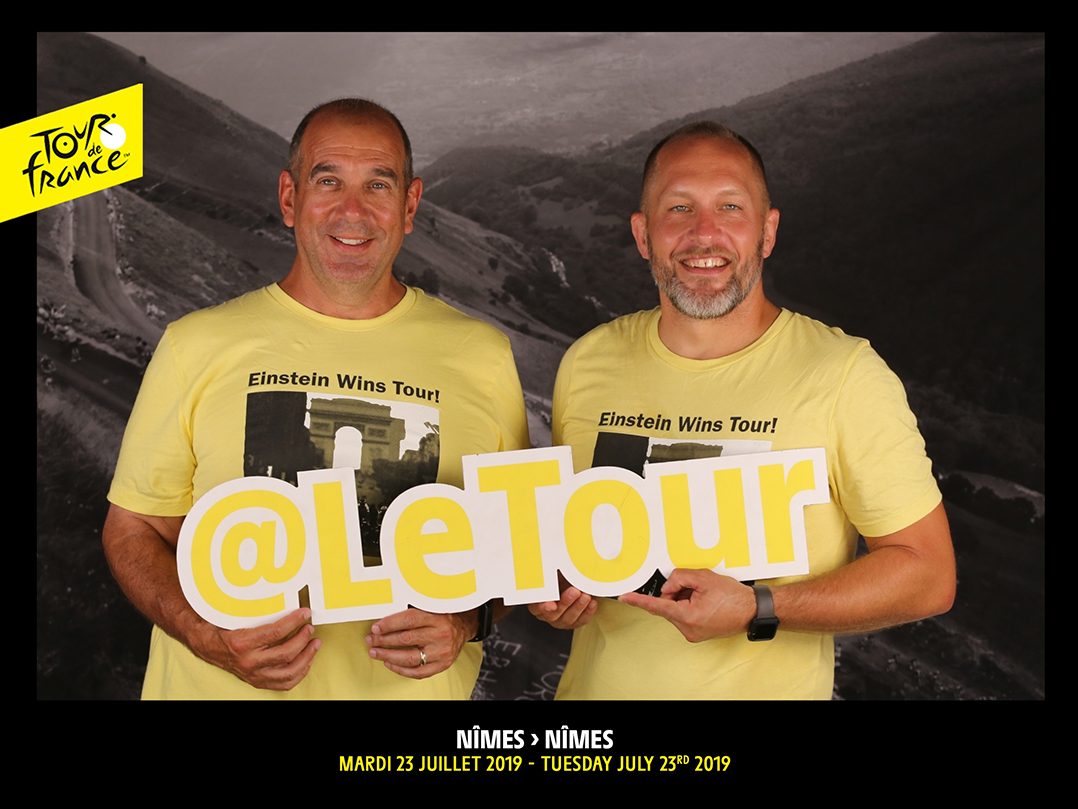Clay Middle School science teacher Sean McVey expected the biggest takeaway from his experience visiting bicycle shops in France would be specific to science.
“But coming out of it, I think of all the examples of seeing creative and passionate people outside of a school setting (was the takeaway),” McVey said. “I am surrounded by creative and passionate teachers and students every day at Clay Middle School, but this was a chance to see people like that in other fields, and every skill set has value at companies like Trek Bicycles and Zipp Speed Weaponry.”
McVey and fellow Clay science teacher Andy Simon received $12,000 from the Lilly Endowment Teachers Creativity Fellowship Program to meet with bicycling company engineers during the Tour de France. The teachers watched the end of the race on the Champs Elysees in Paris.
McVey said he didn’t realize that aerodynamics was the most important factor in the rider/bicycle system.
“Going in, I knew it was significant, but I thought rider power and bike weight were equally important,” McVey said. “I was also fascinated to learn that racers will often choose wider tires at lower air pressures. That was contrary to everything I thought I knew about racing cycles. While the wider, softer tire does create more friction with the ground, it allows more of the rider’s power to be transferred into forward motion. I think the thing I most share with others is learning that Zipp developed an aerodynamic wheel design after considering the structures on the fins of humpback whales.”
Simon said some of the most impactful lessons were how people have used physics in their life after school.
Simon said while visiting Trek and Zipp, he was fascinated to see their employees brainstorming ideas, using computer-aided design software and tooling skills. He said teamwork helped people in various roles improve the product.
“There truly is a job for every interest a person may have,” Simon said. “It was great to see what we have been doing in our classrooms with this idea in mind is really happening in the workplace. The wowing physics idea was how they described that they do not mirror the physics of automobiles, such as IndyCars, but rather more closely related to the physics of a sailboat. After they explained this idea, it made perfect sense.”
Simon said a highlight was being so close to the team buses as they were getting ready for that day’s stage race.
“We were able to look at the bikes and see the subtle differences each rider may have, depending on their personal riding styles,” Simon said. “This would have gone unnoticed had it not been for the time with Trek and Zipp.”
McVey said seeing the bicycle wheels and frames that they learned about being “used in such a grand spectacle amid breathtaking scenery was incredible.”
The teachers participated in a seven-day tour through Custom Getaways to follow the famed bicycle race.
The teachers created an Instagram account called @2touringteachers so students could follow. They also did a few live-streaming events from France.
“The live stream was exciting for us as we would see the students log on and be a part of what we were doing,” Simon said.



